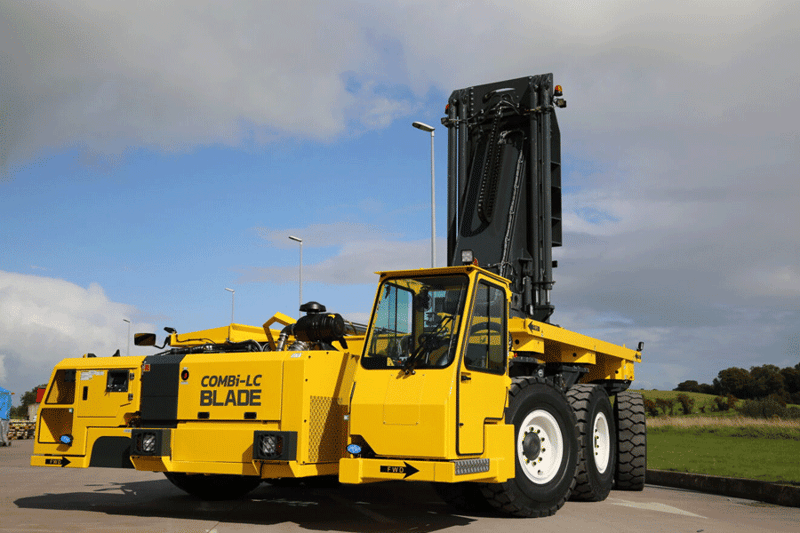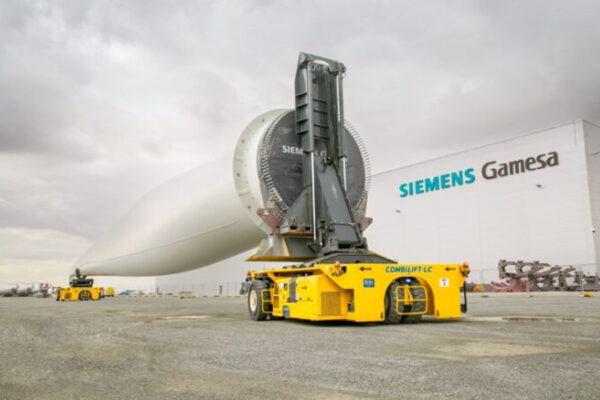 Combi-LC-Blade
Combi-LC-Blade Combilift Comb-LC crafted to cater to the intricate load handling demands of large-scale offshore wind turbine manufacturers
303 Concord St.
Greensboro, NC 27406
Phone: 877 266-2456
Fax: 336 378 8842
http://www.combilift.com
The Combi-LC facilitates the transport of wind turbine components, handling lengths of up to 115m and weights of about 70t. This system streamlines the movement across production stages and to storage sites, even spanning distances of up to 5km.
As the green energy sector continually pushes the boundaries of height and size for components like wind turbine towers and blades, there arises an ever-growing need for novel methods to transport these finished products from the manufacturing facility to the storage yard before dispatch to their intended destinations. Combilift has collaborated with industry giants in this sector to engineer stable and highly efficient lifting solutions for these challenging and exceptionally valuable loads, culminating in the creation of the Combi-LC.
 The Combi-LC carrier unit boasts a unique attachment designed to securely grip the substantial cylindrical end of the blade, firmly affixed to the generator hub. This robust machine, powered by a 75-ton capacity diesel engine and equipped with 12 wheels, offers versatile multidirectional steering with 6 wheels. What sets it apart is its “tip side” carrier unit, which smoothly maneuvers beneath the blade, supporting it via a hydraulic tilting table-mounted clamp toward its narrower tip.
The Combi-LC carrier unit boasts a unique attachment designed to securely grip the substantial cylindrical end of the blade, firmly affixed to the generator hub. This robust machine, powered by a 75-ton capacity diesel engine and equipped with 12 wheels, offers versatile multidirectional steering with 6 wheels. What sets it apart is its “tip side” carrier unit, which smoothly maneuvers beneath the blade, supporting it via a hydraulic tilting table-mounted clamp toward its narrower tip.
Notably, this root side unit represents the first Combi-LC iteration to feature a cab, a customization made at the request of our customers. This addition proves invaluable, especially when traversing the 5km distance to reach the storage yard. When not engaged in lifting duties, the cab-equipped Combi-LC can travel at an impressive 10km/h, significantly expediting the operator’s commute. It’s worth mentioning that these units often operate in demanding environments with less-than-ideal ground conditions, making their robust design and adaptability all the more essential.









